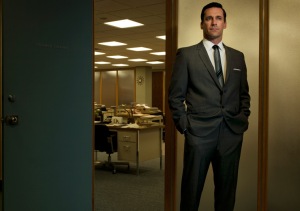A Placemaking Journal
Branded! Municipal Identity and the Selling of Cities
What does America’s oldest city have in common with one of its youngest? They’re both concerned with branding.
St. Augustine, Florida, kicked off their branding initiative in 1715 by petitioning the King of Spain for a coat of arms. Upon his receipt, the King assumedly delegated the request to his creative services department who, in turn, set out to define the message and visually articulate the city’s identity.

The resulting execution diligently captured St. Augustine’s essence–a strong, Christian safe haven, noble and serene, with a familial affinity for France and lasting respect for the bad ass military garrison that founded the city–though, sadly, the completed logo was ultimately caught up in a bureaucratic morass and never delivered until the city issued a follow-through memo in 1991, some 276 years later.

The process of city branding moves a little faster in our modern age. Perhaps a bit too fast, it turns out, as the recently incorporated city of Dunwoody, Georgia, discovered a few weeks ago when roll-out of their new identity drew less than flattering notice for its eerie similarity to a certain global corporate behemoth.
Now, I don’t live or work in Dunwoody so I’ll leave it to the good people who do to decide what, if anything, they want to do about it. But I do have some thoughts on the whole idea of branding and its role in the articulation of place.
Such thoughts are uncommon among the placemaking and community-building crowds I run with now because they’re rooted in the 12 years I spent working in the shadow of J Walter Thompson, the global advertising agency named for the godfather of modern branding who pioneered many of today’s common practices well over a century ago. The resulting perspective means I don’t consider the issue solely as one of “selling a city” any more than I do as some lofty grasp for authenticity, moralistically hovering above the crass business of boosterism.
The problem, it seems, is a fundamental misunderstanding of what branding a city really means. Talk of “creating a brand” suggests a blank slate, a point of ground zero where we begin the process of establishing who we are. But cities are living organisms, with a legacy of past behaviors and no shortage of current, on-the-ground realities, which means–like it or not–they already have a brand.
Jackie Benson, a long-time player in place-based marketing, puts it this way: “If you’re the guy who doesn’t return phone calls, it doesn’t matter how much you talk about your personal commitment to your clients. You’re still the guy who doesn’t return phone calls. That’s your brand.”
That is, you can’t escape from who you are and how people see you. You can change it through meaningful action, but you can’t gloss it over. And that’s the rub with city branding, because meaningful action is all about genuine leadership and good governance which, all too often, are in woefully short supply.
Heed this warning: If your city branding efforts don’t begin with top down commitment to both your foundational principles and your aspirational goals, you are wasting your time. It doesn’t matter how many chamber of commerce meetings you attend, how many resident focus groups you hold, or how many Addy award winning agencies you interview.
If your community has not done the hard work of building consensus, defining goals and demonstrating commitment through meaningful actions, it just doesn’t matter.
If your leadership fails to engender trust, you can’t sell strength. If your policies are not incentivizing what you want and penalizing what you don’t, you can’t sell vision. If your zoning promotes sprawl and your citizens are disconnected from civic participation, you can’t sell community.
No matter how pretty your logo or clever your tag, you are wasting your time.
In marketing, this is what’s known as getting the product right. Unfortunately, with cities, you can’t just send it back to the lab. It takes years of labor and commitment, with government, citizens, businesses and institutions all working together.
It’s hard. And when things are hard, the thought of just picking up the phone and calling the local ad agency can seem pretty darn attractive.
Don’t buy it.
–Scott Doyon









